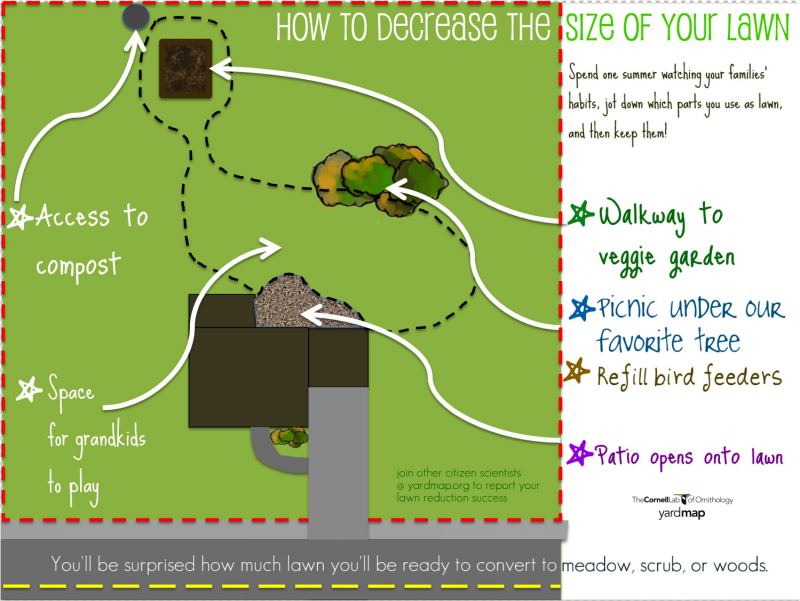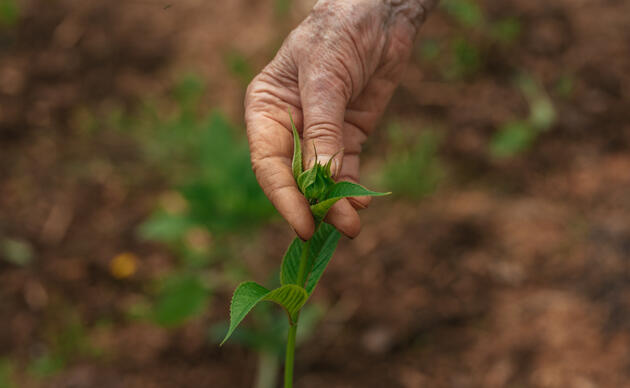Conservation
Bird and Wildlife Friendly Yards
Welcoming pollinators, including birds, to your yard is easy! Learn more on how to create safe places for wildlife.
Create a Bird and Pollinator Friendly Yard:
- Attract your favorite bird by planting its favorite foods! You can attract specific types of birds or butterflies to your yard with native plants. Use YardMap's interactive tool to find out what types of plant bears the berries and seeds that attract specific species of birds and pollinators. For example, California Quail love Blue Elderberry, hummingbirds are partial to Toyon, and many species of butterfly will flock to a California Coffeberry bush. Here are the For more information, visit YardMap's Great Berries for Great Birds page!
- Indoor cats save lives. Domestic cats kill billions of birds each year. Keeping cats indoors has been proven to keep them healthier and creates a safer habitat for birds!
- Install bird feeders or nest boxes! Turn your yard into a haven for birds by giving them a safe place to build their nests and an all-you-can-eat buffet! Make sure feeders and bird houses have predator guards and place them far away from shrubs or other cover that provides a hiding place for cats or other predators.
Set your lawn free! Is your lawn just sitting there? Most of the grasses used in lawns are not native to Northern California and need a lot of water, fertilizer, and attention from you to survive. Native grasses thrive with less water and don’t need to be fed or mowed as often. Growing native grasses is just one way to have a “greener” lawn:
- For a healthy bay, fertilize with care: If you must add fertilizer to your lawn and cannot use organic or compost-based fertilizers, make sure you follow the manufacturer’s instructions carefully and avoid fertilizing before rain is predicted. Extra fertilizer runs off into our waterways and eventually winds up in the bay, where the extra nutrients cause algal blooms, leading to a toxic and deoxygenated environment for the birds, fish, and other animals that rely on the bay!
- Let it grow: Have parts of your lawn that don’t get used? Let it grow into a lush meadow or plant them with native shrubs and flowers! Let the parts you do mow grow a little bit higher (3”-4”) for healthier grass.
- Burn fat, not fuel: Using a conventional gas lawn mower for one hour emits as much carbon dioxide as driving a car 100 miles. Use a push mower to reduce carbon emissions and save money.
- Plant Native Grasses: There are many, many wonderful varieties of native grass! An increasing number of lawn care companies are offering native alternatives. Some even offer native sod! Look into planting a native grass blend when replacing your lawn. There are many nurseries and lawn care companies in our area offering this service. Delta Bluegrass Company has a number of excellent native sod options!
- For more tips and information, visit http://app.yardmap.org/map#!/learn/habitat-types/lawns/
How you can help, right now
Make a gift today
Help us engage future conservation leaders! When you sponsor a youth leader, you help the birds.
Become a part of our volunteer core!
Begin your volunteer journey today by finding the perfect fit for your talents.
Read our stories
Our bi-monthly e-newsletter is filled with incredible updates about our work.





